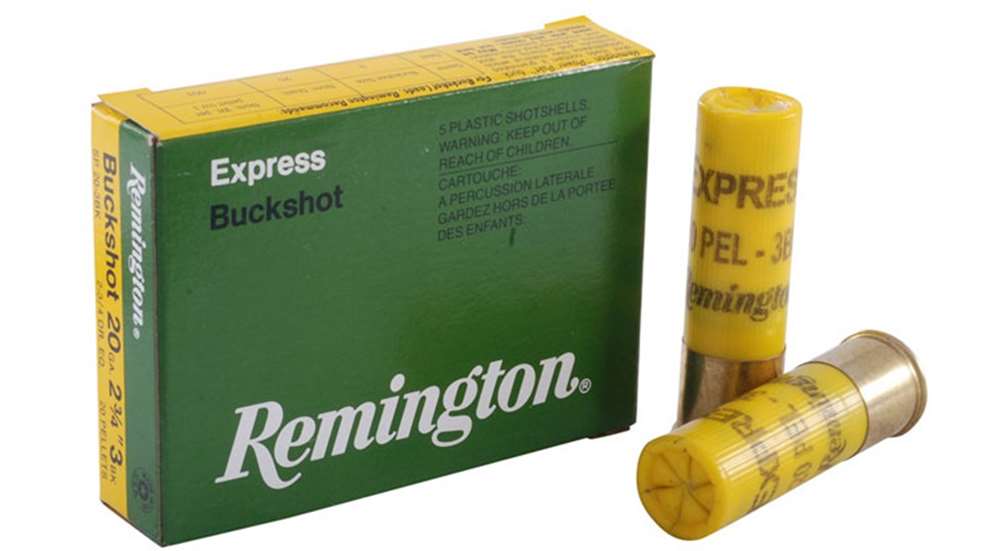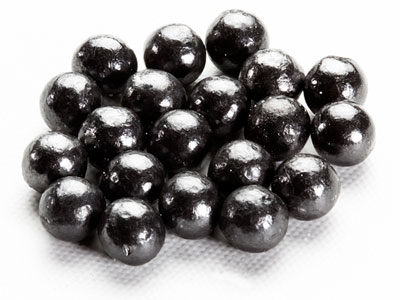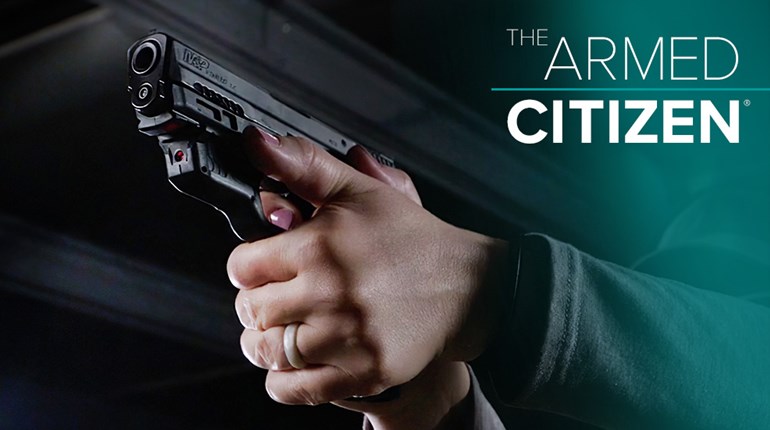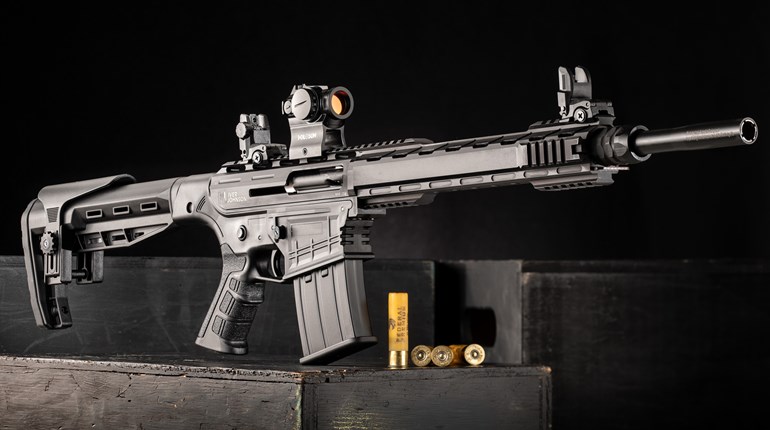
In a home-defense scenario, there's really no such thing as too much force. Your goal, without apology, is to immobilize a criminal threat, thereby ensuring your survival and protecting the lives of your loved ones. There's perhaps no better tool to accomplish this than the 12-gauge shotgun, which is capable of rendering roughly the energy of four simultaneous .45 ACP strikes upon the target. But don't take my word for it. Refer to the hard numbers provided by comparing the muzzle energy of the two rounds, and you'll come to the same conclusion.
Yet critics of the 12 gauge argue it has a large, inherent weakness: Its recoil is as stout or stouter than practically any other long gun. With standard loads, proper technique and practice, even a petite woman can achieve proficiency with the 12-gauge shotgun. Still, there will always be some individuals who are more comfortable—and therefore more accurate—with a lighter-recoiling gun. The logical choice for them is downsizing to a 20 gauge, but does this alternative provide them enough power to stop a threat?

"You hear that question all the time, but I find it really silly based on the 20-gauge shotgun's close-range energy," says Ralph Mroz, a firearms expert and the presenter of the "Armed Response" series of training DVDs. "Handguns certainly have their place in self-defense because they are so maneuverable. But if you need to stop an intruder right here, right now, the best choice is a rifle or a shotgun—any shotgun will do, and this absolutely includes the 20 gauge. It provides about twice the power of a .44 Mag. Nobody is getting up from that."
By the Numbers
Here's proof. Using the formula Energy = .5 x Mass x Velocity2, we find a typical 20-gauge self-defense load of 11⁄8 ounces of buckshot traveling at 1,100 fps produces roughly 1,320 ft.-lbs. of energy. That's only about 200 ft.-lbs. less than a comparable 12-gauge load and, as Mroz notes, it's at least twice as much energy as produced by most handgun cartridges.
So, yes, a 12 gauge is more powerful and fires more pellets—it is the ideal choice. If you opt for a 20 gauge, though, a criminal probably won't notice the difference, and that's the whole idea.
Think Small
It's not surprising that petite or recoil-shy individuals are the most likely candidates to benefit from the smaller gauge. However, the 20 gauge also warrants consideration by anyone who may need to share a shotgun with someone of smaller stature.
"You might be built like Killer Kowalski, but is your spouse?" Mroz asks. "That is a necessary consideration, because ideally both you and your spouse should have the knowledge and ability to use the shotgun in an emergency situation."
Home-defense scenarios aren't scripted. Your spouse may be closer to the shotgun when a break-in occurs, or perhaps she's home alone.
Advantage, Perhaps
The 20 gauge produces less recoil. Yet, the difference may not be as great as some folks allege. Many 20-gauge shotguns weigh less than comparable 12 gauges, which somewhat negates the benefit of a lighter payload.
"I'd describe it as only slightly less recoil," Mroz says. "And let's not forget how subjective that so-called 'felt recoil' can be. For instance, to me the recoil of a non-magnum buckshot load out of a 20 gauge doesn't feel like much less than a 12 gauge at all. But different people will always feel the recoil in different ways."
Your shooting technique and even the contours of your physique can affect the transfer of recoil to your body. There are, of course, mental factors as well. So, to determine whether you'll benefit from the lighter thump of a 20 gauge do some experimenting. Borrow a 20 gauge from a friend, and hit the range. Run drills with shotguns in both gauges, and compare the results. Do you find the 12 gauge uncomfortable, but feel the kick from a 20 gauge is more manageable?
OK then. Make the switch.
Limitations
The 20 gauge produces negligibly less power than the 12 gauge, but it is disadvantaged in another area. It isn't as popular as the 12 gauge, and therefore manufacturers aren't motivated to offer 20-gauge shotguns in as many configurations.
"You may have a much harder time finding a 20 gauge with an 18-inch barrel length or ghost-ring sights," says Mroz. "And there just aren't all the accessories out there for it like you'll find for a 12 gauge. You can basically customize a 12 gauge any way you want, but a 20 gauge could require some pretty serious gunsmithing. That's really the biggest reason I prefer a 12 gauge."
Best Loads
Aside from the fact that 00 buckshot is not available in a factory 20-gauge load due to shell-size limitations, your shot selection need not be affected by switching to the 20. We will delve more deeply into shot-size selection in a future column, but Mroz and I both believe No. 2 or No. 3 buckshot to be ideal choices for the 20 gauge. Federal also offers a 20-gauge No. 4 buckshot load that, when coupled with its FliteControl wad, shows promise for delivering a tight, energy-packed pattern.
"All the experts advise using buckshot," Mroz says. "But I think it's kind of funny when people discuss what size. Whether you're shooting 00 buckshot or No. 2 or No. 3 buckshot, a shotgun produces overwhelming energy. It really doesn't matter what size shot exits the barrel. It'll do the job."
Another misconception people have regarding the 20 gauge is that its pellets decelerate faster. In reality, the payload may be smaller in terms of pellet count, but velocity at the muzzle is pretty comparable to that of a 12 gauge. Assuming equal velocities, a buckshot pellet that exits a 20-gauge barrel produces the same terminal energy as if it were fired from a 12 gauge, which again speaks to the 20 gauge's adequacy for home-defense.
If the weight or recoil of a 12 gauge is simply too much for you or any member of your household, the 20 gauge warrants a look. You may find it more comfortable to shoot, which will boost confidence. Should the need arise to use it for protection, you'll be just as well armed.






































